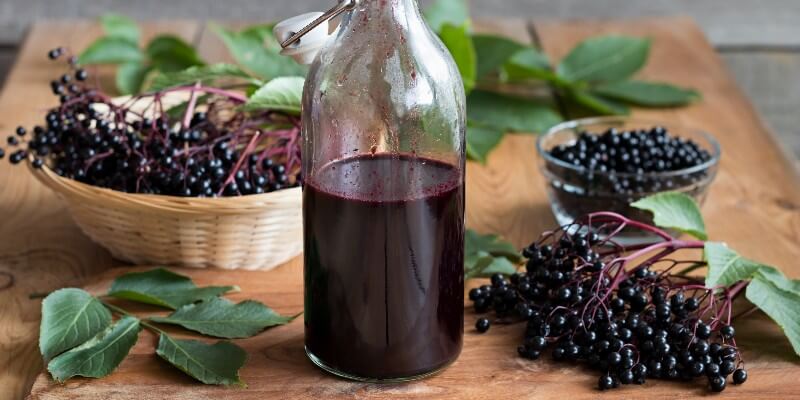by Melissa Chichester
While much of the traditional use of elder has focused on the flower, the past few decades have focused more on the purplish-black berry known as elderberry grows all over the Northern Hemisphere in temperate regions. Elderberry has been used in traditional wellness practices for hundreds of years and even has some mythical folklore surrounding it. Today, elderberry is best known for providing immune support.*
Elder has a long and colorful history. Named the “Herb of the Year” in 2013, the Kansas City Star reported that evidence in Switzerland and Italy revealed that the elderberry plant may have been used by prehistoric man. Anatomia Sambuci, a book published in 1644 by Dr. Martin Blochwick, is about the uses and benefits of elder. Some Native American tribes used branches from the elder tree to make flutes. Interestingly elderberries have many uses, from making syrups to using dried berries, and making elderberry wine. Elderberries can also be used in the production of jams, jellies, tea, and vinegar.

Elderberries are ripe when they turn a very dark purple or black color, and the berries need to be processed or cooked before consumption. It is this rich purple color that is the sign of anthocyanins, a type of flavonoid which are the beneficial plant pigments that are also known to possess antioxidant properties.
Elderberry also has been traditionally used for immune support.*
Elderberries also contain important nutrients, including Vitamin C, Vitamin B-6, and iron.
Elderberries cannot be eaten raw and need to be cooked or processed before consumption. Making syrup is one of the most popular ways to process elderberries. Elderberry syrup is often drizzled onto breakfast treats like crepes in addition to being used for wellness. If you have access to an elderberry plant, making your own syrup is easy!
Ingredients
Directions
Add water, elderberries, ginger, cinnamon, and cardamom to a pot. Bring to a boil and let simmer for 45 minutes to one hour, until the liquid is reduced by half.
Remove from heat and let cool. Mash the berries if needed, then strain the mixture with a sieve or cheesecloth. Discard the remaining berries after straining.
Transfer the elderberry liquid into a glass bowl and mix with the honey. Store in a sealed glass jar in the refrigerator for up to three weeks.